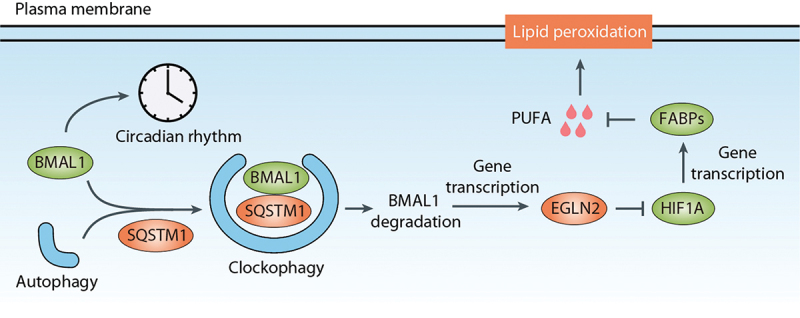Figure 6.

Clockophagy in ferroptosis. BMAL1/ARNTL, a transcription factor involved in the circadian clock, undergoes selective degradation through autophagy, a process known as clockophagy. The autophagy receptor SQSTM1/p62 plays a role in recognizing and degrading BMAL1 during clockophagy. Degradation of BMAL1 results in the upregulation of EGLN2, a target gene of BMAL1. EGLN2, in turn, inhibits the function of HIF1A, which acts as a suppressor of ferroptosis by inducing the expression of FABP3 and FABP7. These proteins regulate fatty acid uptake and lipid storage, thereby limiting the availability of polyunsaturated fatty acid (PUFA) and influencing the susceptibility to ferroptosis.
